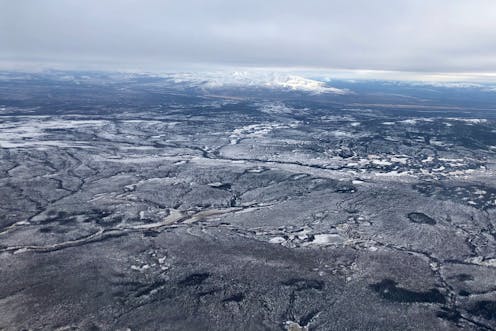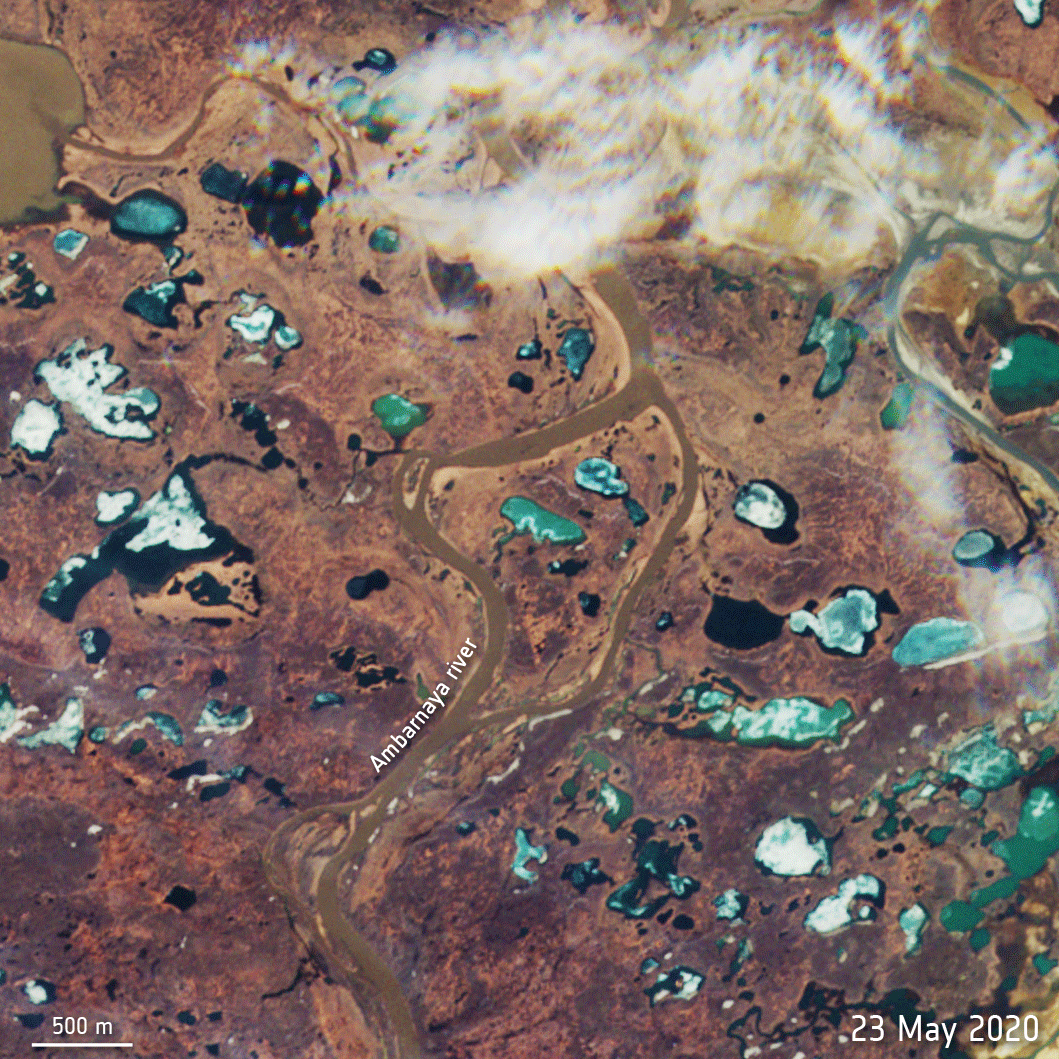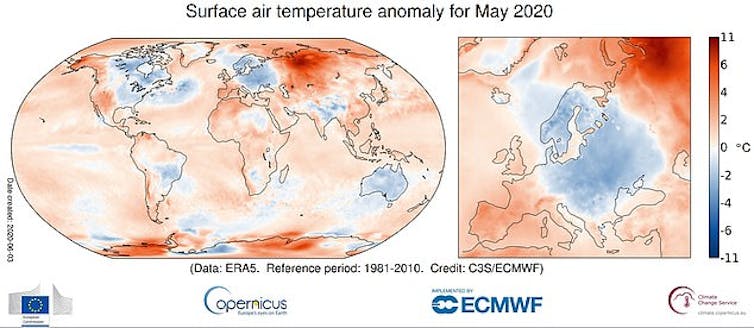The Bakken Boom Goes Bust With No Money to Clean up the Mess
By Justin Mikulka August 8, 2020

More than a decade ago, fracking took off in the Bakken shale of North Dakota and Montana, but the oil rush that followed has resulted in major environmental damage, risky oil transportation without regulation, pipeline permitting issues, and failure to produce profits.
Now, after all of that, the Bakken oil field appears moving toward terminal decline, with the public poised to cover the bill to clean up the mess caused by its ill-fated boom.
In 2008, the U.S. Geological Service (USGS) estimated that the Bakken region held between 3 and 4.3 billion barrels of “undiscovered, technically recoverable oil, ” starting a modern-day oil rush.
This oil was technically recoverable due to the recent success with horizontal drilling and hydraulic fracturing (fracking) of oil and gas-rich shale, which allowed hydrocarbons trapped in the rock to be pumped out of reservoirs previously unreachable by conventional oil drilling technology.
The industry celebrated the discovery of oil in the middle of North America but realized it also posed a problem. A major oil boom requires infrastructure — such as housing for workers, facilities to process the oil and natural gas, and pipelines to carry the products to market — and the Bakken simply didn’t have such infrastructure. North Dakota is a long way from most U.S. refineries and deepwater ports. Its shale definitely held oil and gas, but the area was not prepared to deal with these hydrocarbons once they came out of the ground.
Most of the supporting infrastructure was never built — or was built haphazardly — resulting in risks to the public that include industry spills, air and water pollution, and dangerous trains carrying volatile oil out of the Bakken and through their communities. With industry insiders recently commenting that the Bakken region is likely past peak oil production, that infrastructure probably never will be built.
Meanwhile, the petro-friendly government of North Dakota has failed to regulate the industry when money was plentiful during the boom, leaving the state with a financial and environmental mess and no way to fund its cleanup during the bust.
Haste Makes Waste: Booms Move Faster Than Regulations
After the USGS announced the discovery of oil in the Bakken, the oil and gas industry moved fast, with both the industry and state and federal regulators ignoring whether what amounted to essentially new methods of extracting and transporting large amounts of oil called for new rules and protections.
The Bakken’s big increase in oil production quickly exceeded its existing pipeline capacity, leading producers to turn to trucks to move their oil out of the fields. But as the Globe and Mail reported in 2013, this stop-gap solution wasn’t working well: “The trucking frenzy was chewing up roads, driving accident rates to record highs and infuriating local residents.”
The industry could have restricted production until new pipelines and processing equipment were built but instead moved to rail as the next transportation option. High oil prices motivated drillers to get the oil out of the ground and to customers as fast as possible. Moving oil by rail was essentially unregulated and would not require the permits, large investment, or lead times required for pipelines, leading to the Bakken oil-by-rail boom.
Moving large amounts of this light volatile oil on trains had never been done before — but there was no new regulatory oversight of the process. Without proper oversight, the industry loaded the Bakken’s volatile oil into rail tank cars originally designed to carry products like corn oil. That’s despite the National Transportation Safety Board warning that these tank cars were not safe to move flammable liquids like Bakken crude oil.
The industry waved away these warnings. July 6, 2013 marked the first major derailment of a Bakken oil train, resulting in a massive explosion, 47 deaths, and the destruction of much of downtown Lac-Mégantic, Quebec. Bakken “bomb trains” (as train operators called them) continued to derail, creating large oil spills and often catching fire and burning for days. Regulators have still failed to address the known risks for oil trains in the U.S. and Canada.
Fracking for oil also resulted in large volumes of natural gas coming out of the same wells as the oil, further contributing to the financial troubles of shale producers. However, with no infrastructure in place to process or carry away that gas, the industry chose to either leave it mixed in with the oil loaded onto trains (making it more volatile and dangerous) or simply burn (flare) or release (vent) the potent greenhouse gas into the atmosphere.
More than a decade after the Bakken boom started, North Dakota was flaring 23 percent of the gas produced via fracking — making a mockery of the state’s flaring regulations. In July, The New York Times detailed the environmental devastation caused by flaring in the oil fields of Iraq, where they flare about half of the gas as opposed to the quarter of the gas that North Dakota has flared.
Also in July, researchers at the University of California, Los Angeles and University of Southern California published research that found pregnant women exposed to high levels of flaring at oil and gas production sites in Texas have 50 percent higher odds of premature birth when compared to mothers with no exposure to flaring.

Flare from an oil well in the Permian region of Texas. Credit: © 2020 Justin Hamel
Another major blindspot for the industry and regulators has been the radioactive waste produced during fracking. When the industry did finally acknowledge this issue in North Dakota, its first move was to try to relax regulations to make it easier to dump radioactive waste in landfills — a practice that is contaminating communities across the country.
In 2016, a study from Duke University found “thousands of oil and gas industry wastewater spills in North Dakota have caused ‘widespread’ contamination from radioactive materials…”
The fracking boom in North Dakota has resulted in widespread environmental damage and is worsening the climate crisis, given its high flaring levels, methane emissions, and, of course, production of oil and gas. As major Bakken producers go bankrupt and continue to lose money while the oil field goes bust, who will pay to clean up the mess?
Like most oil-producing states, North Dakota had the opportunity to require oil and gas producers to put up money in the form of bonding which would be designated to properly clean up and cap oil and gas wells once they were finished producing. Unfortunately, the state didn’t put that precaution in place, and now bankrupt companies are starting to walk away from their wells.
“It’s starting to become out of control, and we want to rein this in,” Bruce Hicks, Assistant Director of the North Dakota Oil and Gas Division, said last year about companies abandoning oil and gas wells.
The state recently decided to use $66 million in federal funds designated for coronavirus relief to begin cleaning up wells the oil industry has abandoned — costs that the industry should be covering, according to the law, but that are now shifted to the public.
The Bakken boom made a lot of money for a select few oil and gas executives and Wall Street financiers. But as the boom fades, taxpayers and nearby residents have to deal with the financial and environmental damage the industry will leave behind.
Bakken’s Best Days Are a Thing of the Past
As DeSmog reporting has revealed, shale producers have not been profitable for the past decade, even though they have drilled and fracked most of the best available shale oil deposits. While the prolific Permian region in Texas and New Mexico still has some of the best “tier one” core acreage for oil production left, that isn’t the case in the Bakken.
In June, oil and gas industry analysts at Wood MacKenzie highlighted this discrepancy in remaining core acreage between the Permian and the Bakken. According to Wood MacKenzie, the top quarter of remaining oil well inventory in the Permian would result in over 8,000 new wells. For the Bakken, however, the analysts put that number at 333 wells.
This difference is why John Hess, CEO of major Bakken producer Hess Corporation, predicted in January that Bakken production would soon peak.
The drop in oil demand due to the pandemic has hit the industry as a whole, but the Bakken was already in decline, with the best producing wells a thing of the past well before the novel coronavirus reached U.S. shores.
In September 2019, The Wall Street Journal reported on the dismal outlook for Hess Corporation’s oil wells, noting last year: “This year’s wells generated an average of about 82,000 barrels of oil in their first five months, 12 percent below wells that began producing in 2018 and 16 percent below 2017 wells.”
Legal Reviews of Pipelines Potentially Causing Shutdowns
Even when the industry did try to construct oilfield infrastructure in the Bakken, its rush to build and manage pipelines hasn’t always worked out well. Legal challenges to two major Bakken pipelines, one old, one new, may shut down both of them soon.
The controversial Dakota Access pipeline (DAPL) is facing a potential shutdown after a judge ruled that the Army Corps of Engineers did not properly address oil spill risks and now must complete a full environmental review, which could result in a long-term shutdown of the pipeline while the Corps completes the study. Energy Transfer, DAPL‘s owner, appealed that ruling, and a subsequent court decision has allowed the pipeline to remain in operation while the legal battle over the environmental impact study continues.
At the same time, the Tesoro High Plains pipeline — in operation since 1953 — is facing a shutdown because it failed to renew an agreement with Mandan, Hidatsa, and Arikara Nation landowners on the Fort Berthold Indian Reservation, meaning the pipeline’s owner, Marathon, now is trespassing on that land.
These pipelines together ship more than one-third of the oil out of the Bakken, and if they are shut down, Bakken oil producers likely would turn to rail again to move their oil. However, rail is significantly more expensive than pipelines and not economically viable at current low oil prices.
However, at current production levels, existing pipelines (other than the two in question) and current long-term rail contracts can likely handle most of the Bakken’s oil production, especially as the region becomes less attractive to investors.
Energy consulting group ESAI Energy recently released a new report on U.S. pipelines, with analyst Elisabeth Murphy concluding, “An uncertain outcome for Dakota Access will have knock-on effects for the Bakken, such as capital being diverted to other basins that have better access to markets.”
The ESAI analysis also concludes that the Bakken will decline by approximately 270,000 barrels per day on an annual basis in 2020 and by a further 65,000 barrels per day in 2021.
With declining total production and new wells producing less than the past, Bakken producers are facing rising debts without the means to pay them back.
End of the Unconventional Bakken Boom
Oil produced by fracking is called “unconventional oil” due to the new technologies used to extract it from shale. However, it is unconventional in other ways as well. One, it has never been profitable. Another is a change in the boom-and-bust cycle, which has been a part of the oil industry since its inception in the U.S. in the 1850s.
Traditionally the boom-and-bust cycle for conventional oil production was tied to the price of oil. Low prices caused busts. This was true of the shale oil industry in 2014 when oil prices crashed. However, the industry returned to record production after that.
But it’s different this time. Unlike conventional oil fields, shale field production declines much more quickly. While shale producers could retreat to the top-producing acreage during the 2014 bust, most of that acreage is now gone.
The shale industry is faced with trying to come back from a historic downturn in which even the companies that don’t go bankrupt are saddled with crippling debts. That’s because for most of the past decade, shale companies borrowed more money than they made producing fracked oil and gas, to the tune of hundreds of billions of dollars.
All of the evidence strongly suggest that the Bakken is an oil field on the decline. Its best acreage has been depleted and the economics of the remaining acreage don’t pan out these days.
Reviewing the economics of the Bakken, investment site Seeking Alpha recently concluded that the “Bakken Will Never Be The Same Again.”
Seeking Alpha was purely commenting on the economics of oil production in the Bakken. However, the same could be said about the water, air, and land in the Bakken. Shale companies polluted the environment and are now walking away from the damage — leaving the cleanup bill to the public. It is a tried-and-true approach for industries in resource extraction. Privatize the profits and socialize the losses.
Hess Corporation CEO John Hess knows more about the economics of the Bakken than most people. In February Reuters reported, “Hess plans to use cash flow from the Bakken to invest in longer-term offshore investments.” A major Bakken producer is apparently no longer viewing the region as a good long-term investment.
From here, the outlook only gets worse for the Bakken.










